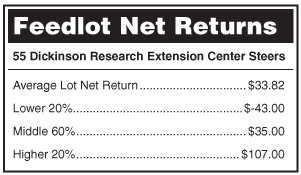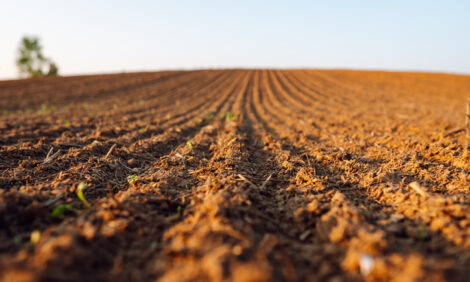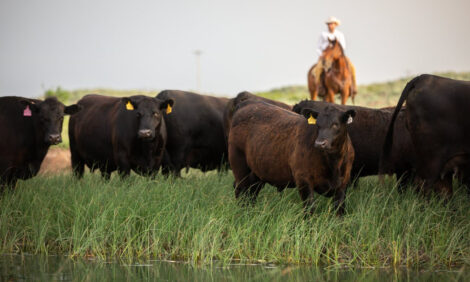



Cow Size - Effects of Cow Size on Pasture Management
By Kris Ringwall, Beef Specialist, North Dakota State University Extension Service. The effect of cow size and expected production from pasture management directly impacts expected outcomes that translate into income. This relationship was discussed in recent BeefTalk articles.A drought, at least in western North Dakota, initiated the discussion. The Dickinson Research Extension Center established two different groups of cattle based on body weight, calculating inputs and potential outcomes.
The two groups (herds) of cattle were weighed. The first herd had 52 cows that averaged 1,216 pounds (856 to 1,395 pounds) and the second herd was 50 cows that averaged 1,571 pounds (1,350 to 1,935 pounds).

Since not all of these cows had mature records in the center's data system, data from all the cows was added. Mature cow records were allotted to 100-pound increments.
The production potential based on “percentage of cow weight weaned” was calculated for the mature cows. Lee Manske, DREC range scientist, calculated the expected nutritional pasture needs and expected outcomes from these cows based on production estimates by 100-pound increments of cow weight.
For cows that were less than 1,300 pounds, the monthly forage dry-matter intake was calculated at 933 pounds. This required 10.75 acres per cow per grazing season in western North Dakota, with a predicted calf weaning weight of 617 pounds.
For cows that weighed from 1,301 to 1,400 pounds, the monthly forage dry-matter intake was calculated at 997 pounds. This required 11.49 acres per cow in western North Dakota, with a predicted calf weaning weight of 611 pounds.
For cows that weighed from 1,401 to 1,500 pounds, the monthly forage dry-matter intake was calculated at 1,051 pounds. This required 12.11 acres per cow in western North Dakota, with a predicted calf weaning weight of 589 pounds.
For cows that weighed 1,501 to 1,600 pounds, the monthly forage dry-matter intake was calculated at 1,101 pounds, requiring 12.68 acres per cow in western North Dakota, with a predicted calf weaning weight of 598 pounds.
For cows that were greater than 1,600 pounds, the monthly forage dry-matter intake was calculated at 1,188 pounds, requiring 13.68 acres in western North Dakota with a predicted calf weaning weight of 572 pounds.
With that data, I already can hear the e-mails coming. The data does not appear logical.
The data means calf gain on pasture weaning weight minus birth weight and then divided by age and then multiplied by grazing days is decreasing as the cow size increases. The larger cows are weaning less percentage of their body weight and producing a smaller calf.
Cows less than 1,300 pounds had a pasture gain estimated at 336 pounds. The 1,301- to 1,400-pound cows, gain was estimated at 332 pounds, the 1,401- to 1,500-pound cows, gain was estimated at 318 pounds, the 1,501- to 1,600-pound cows, gain was estimated at 323 pounds and for cows weighing more than 1,600 pounds, the gain was estimated at 307 pounds.
Translated even further, seasonal calf weight gain (pounds) per acre for each cow group would be 31.21, 28.88, 26.23, 25.49 and 22.41 pounds, respectively. Associated individual costs could be calculated as well as the value of calf gain on a per-acre and/or per-cow basis to fine-tune the added value of the smaller cow.
As was noted in previous discussions, what is offered here is food for thought. Previous and future managerial decisions can and will determine production potential.
There is little we can do to change nutritional requirements, stocking rates and plant biology. How cattle perform given individual production scenarios will vary, but one thing is for sure, do not assume what you see fits.
The actual collection of data is essential to guide local changes in management. The application of assumed principles may or may not apply locally.
It never hurts to have “more food for thought” for supper.
May you find all your ear tags.


